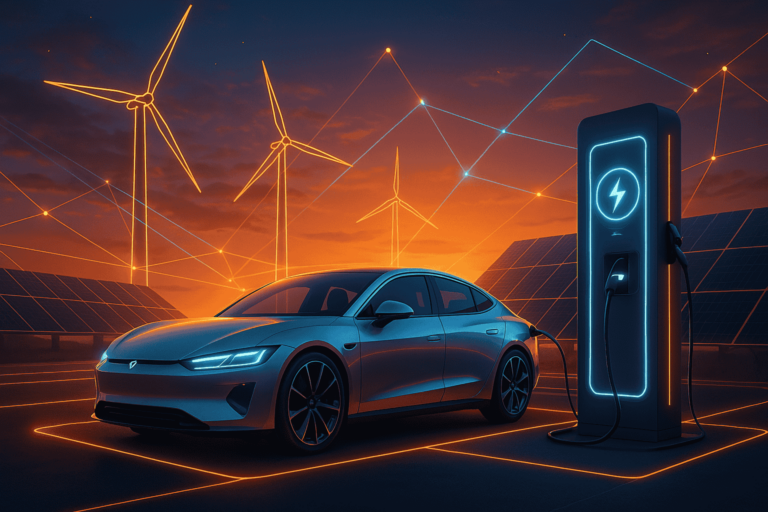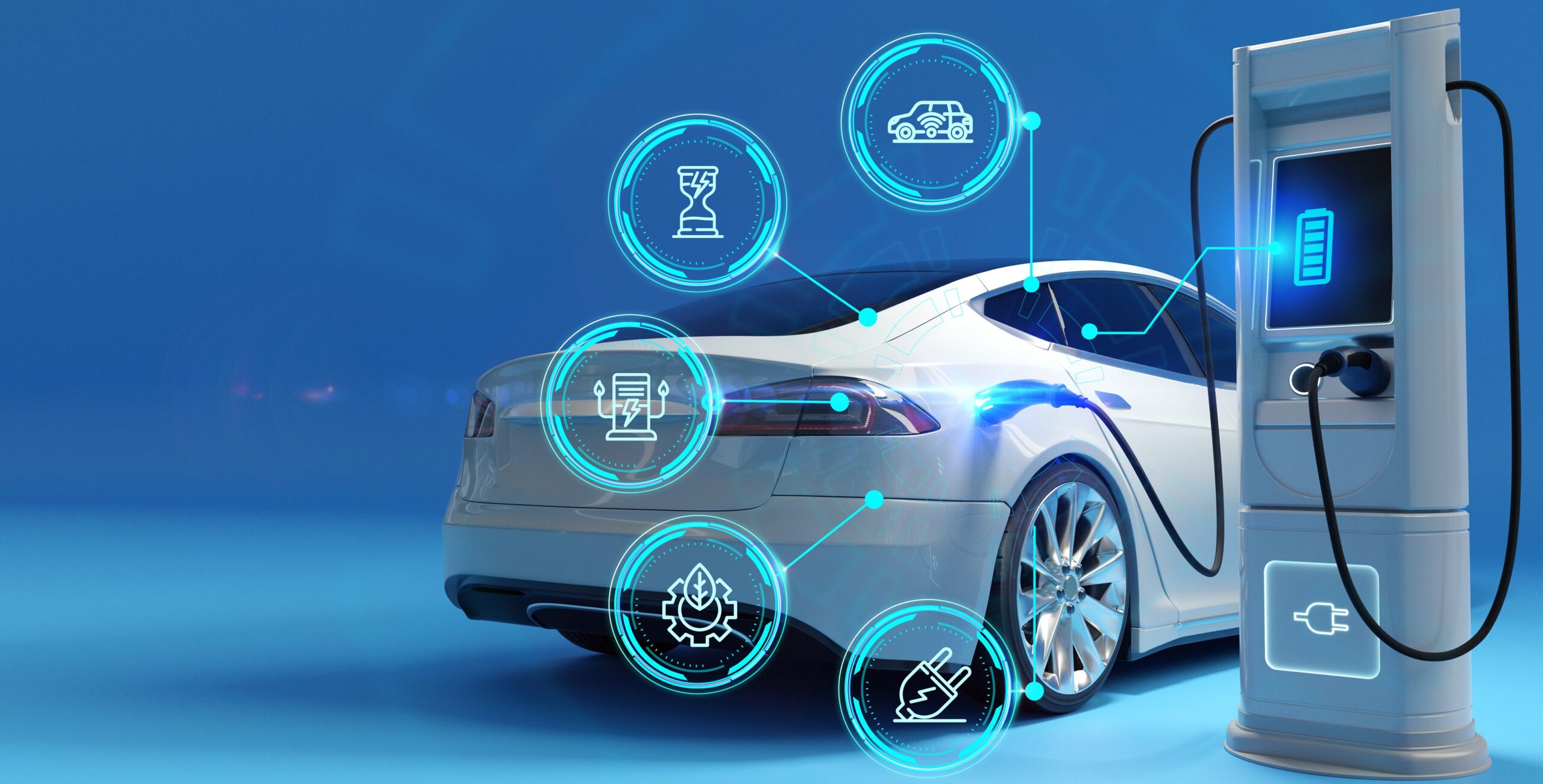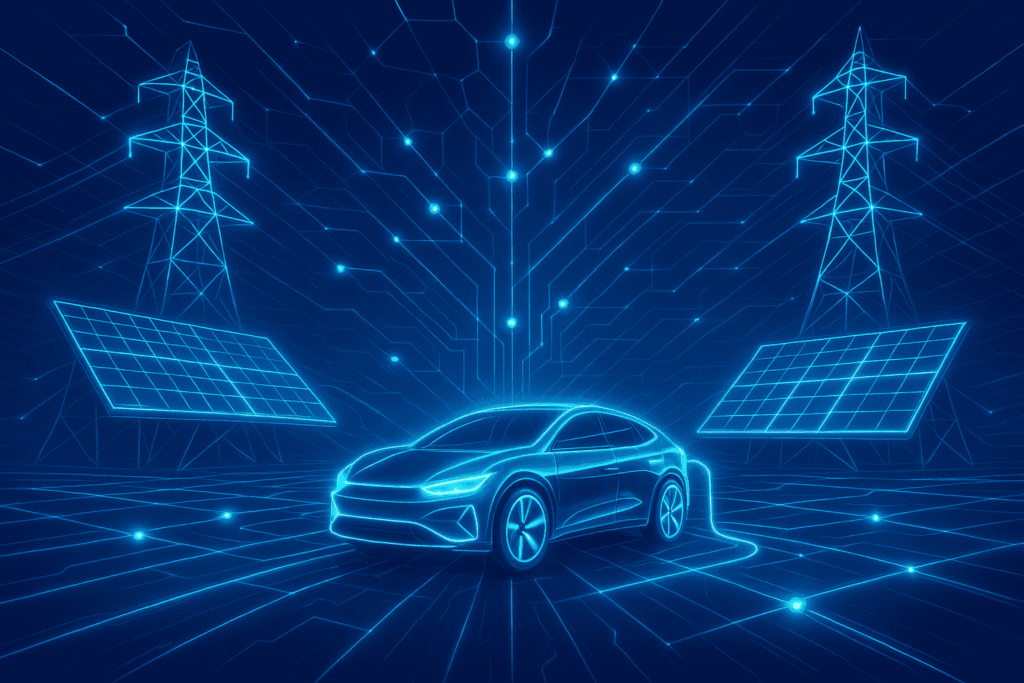
add here text

Revolutionizing the Future: China’s Grid-Connected EV Projects and Clean Energy Innovation
pratik r. sonawane
April 07, 2025
related topics
🚗 Introduction:
China is at the forefront of an energy revolution that is changing the future of transportation and power management. Through its grid-connected electric vehicle (EV) projects, the country is not just rethinking how we drive – it’s transforming how we use, store, and share energy. This innovative approach integrates electric vehicles with the national grid, creating a smarter, more sustainable system. Let’s dive into how these grid-connected EVs work, their benefits, and why China’s bold move is setting the stage for a greener, more efficient future.
⚡🚙 What Are Grid-Connected EVs?

Imagine if your car didn’t just get you from point A to point B—it also helped power your home or support the grid when needed. That’s the power of grid-connected EVs! These cars use bi-directional charging technology, meaning they can charge from the grid and also send energy back to it when demand is high.
Here’s How It Works:
Two-Way Charging: EVs aren’t just charging; they can also discharge energy back into the grid during peak times.
Energy Storage: Think of your car as a mobile battery. It stores energy from renewable sources like solar or wind, and can release it when the grid needs extra power.
Smart Integration: A smart grid controls when and how this energy flows, creating a more stable and efficient power system.
It’s like turning your car into a mini power plant on wheels!
⚡ Why China Is Leading the Charge
China is moving full throttle in the electric vehicle race, and here’s why:
1️⃣ Government Support
China’s government is all-in on green energy. They’ve rolled out policies, subsidies, and investments to make EVs and grid integration a reality. This gives the country a big head start in creating a sustainable, energy-efficient future.
China’s energy policies
2️⃣ Biggest EV Market in the World
China already has the largest fleet of electric vehicles on the planet—millions of them. This massive number gives China a unique advantage to test and scale up this technology faster than any other country.
China’s EV market growth
3️⃣ Tech Innovation
China is known for its cutting-edge technology. With advances in battery storage, smart grids, and bi-directional charging, they’re ready to make EVs a huge part of their energy future.
Innovative tech in China
4️⃣ Sustainability Goals
China has set a bold goal of becoming carbon neutral by 2060. By integrating EVs into the grid, they’re well on their way to hitting that target, reducing carbon emissions, and building a low-carbon economy.
Read about China’s carbon neutrality goal
🔧💡 Innovative Technologies Driving China’s EV Revolution
The success of China’s grid-connected EV projects is due to a combination of cutting-edge technologies that make energy sharing between the grid and vehicles possible. Some key innovations include:
Bi-Directional Charging 🔄🔋
Bi-directional charging is the cornerstone of grid-connected EVs. This technology allows EVs to not only charge from the grid but also send power back when needed. With smart charging stations and advanced software, the energy flow is efficiently managed, ensuring both the grid and EVs benefit. Source: IEEE SpectrumSmart Grids 🌐⚡
Smart grids are an essential part of this system. These grids use real-time data to monitor and control energy distribution, ensuring that electricity is directed where it’s most needed. By integrating EVs into this system, China’s energy network becomes more responsive and adaptable to changing conditions. Source: Smart Grid NewsEnergy Management Systems 📊💻
Energy management software plays a crucial role in optimizing energy flow. These systems use data analytics to predict energy consumption patterns, ensuring that EVs are charged and discharged at the right times to keep the grid balanced and efficient. Source: Energy Central

⚠️🔧 Challenges to Consider
While the benefits are clear, there are a few obstacles to overcome:
Infrastructure Development 🏗️🔌
Widespread adoption of grid-connected EVs requires significant investment in bi-directional charging infrastructure, smart grids, and other supporting technologies. Without this infrastructure in place, it will be difficult to realize the full potential of these projects. Source: The GuardianBattery Durability 🔋⏳
Frequent charging and discharging could affect the long-term health of EV batteries. While battery technology is advancing, it’s important to ensure that these systems are durable enough for years of use without a significant loss of performance. Source: Tesla BlogCybersecurity Concerns 🔐🛡️
As more data flows between vehicles, charging stations, and the grid, cybersecurity becomes a critical issue. Protecting these systems from potential hacks and ensuring data privacy will be essential for maintaining trust and the overall success of grid-connected EV projects. Source: Cybersecurity & Infrastructure Security Agency (CISA)
🌍 The Global Impact: How Grid-Connected EVs Could Change the World
While China is leading the way, the implications of grid-connected EVs extend far beyond its borders. If other countries adopt this technology, we could see a global shift toward a cleaner, more renewable-powered energy system. By incorporating V2G technology, nations could reduce their reliance on fossil fuels, optimize grid performance, and make better use of renewable energy resources. China’s efforts are paving the way for global sustainability, where electric vehicles are not only a clean transportation solution but also an integral part of the world’s smart grid infrastructure. Source: International Renewable Energy Agency (IRENA)

🔋 Conclusion: The Road to a Greener Future
China is leading the way with grid-connected EVs, but this is just the beginning. As this technology grows, it will reshape our energy system, lower emissions, and create a more sustainable future for everyone.
The future is electric, smart, and green—and it’s charging up faster than we ever imagined. Are you ready for the ride?
❓ Frequently Asked Questions (FAQs)
Grid-connected EVs can store and release energy back into the grid, helping balance supply and demand while supporting renewable energy use.
They enhance grid stability, optimize energy use, reduce carbon emissions, and enable better integration of renewable energy sources like solar and wind.
China is investing heavily in EV infrastructure, smart grids, and clean energy policies, making it a global pioneer in the integration of electric vehicles with the national grid.

about author
Share this article
subscribe for weekly updates



